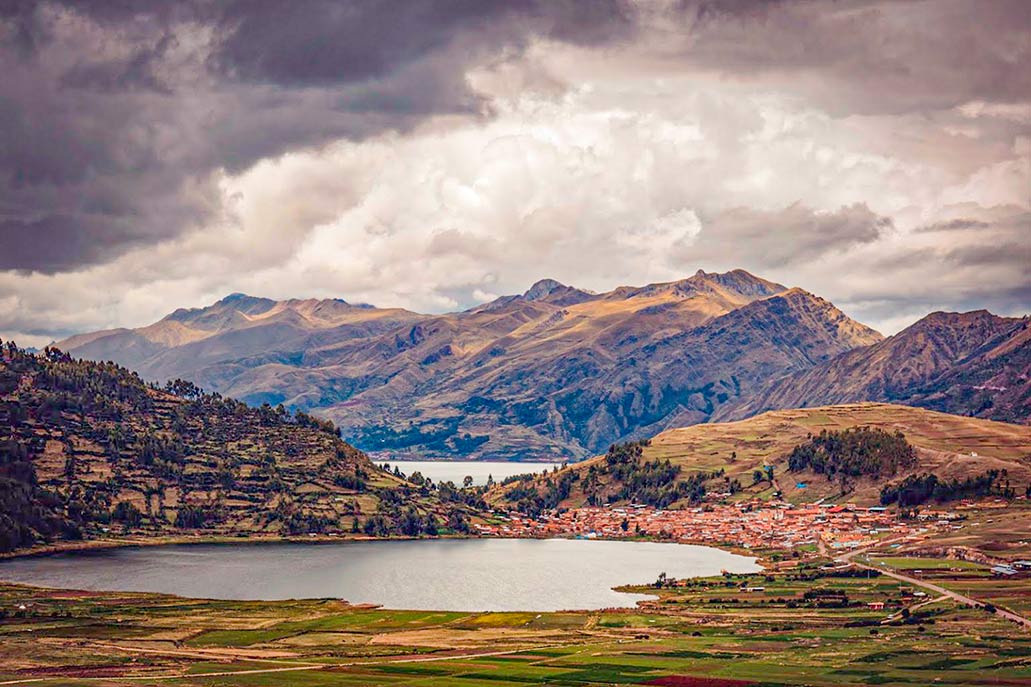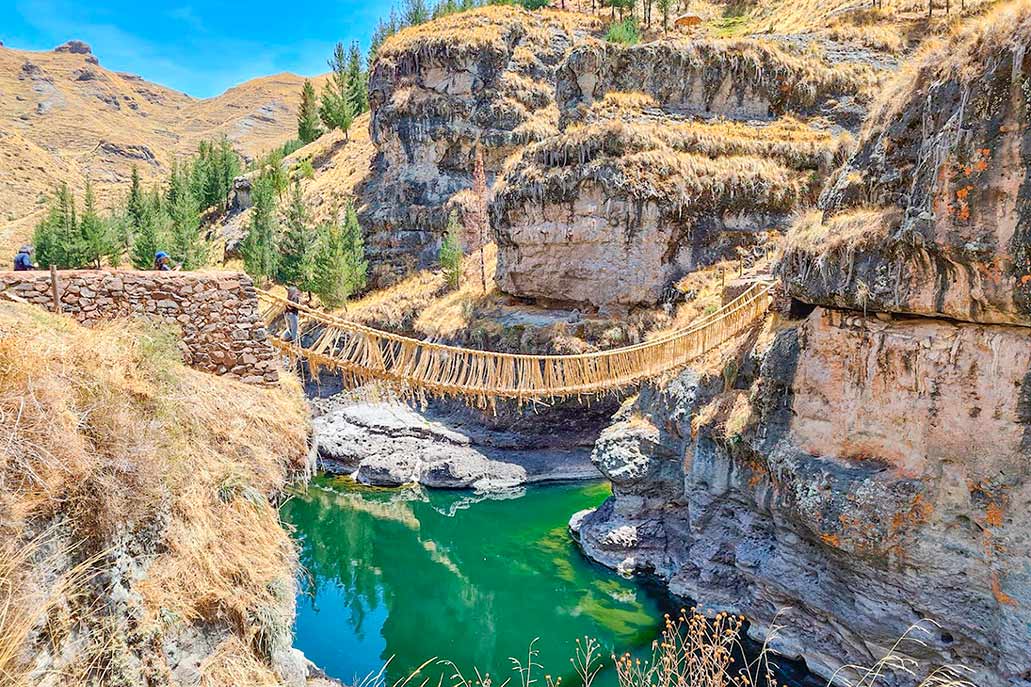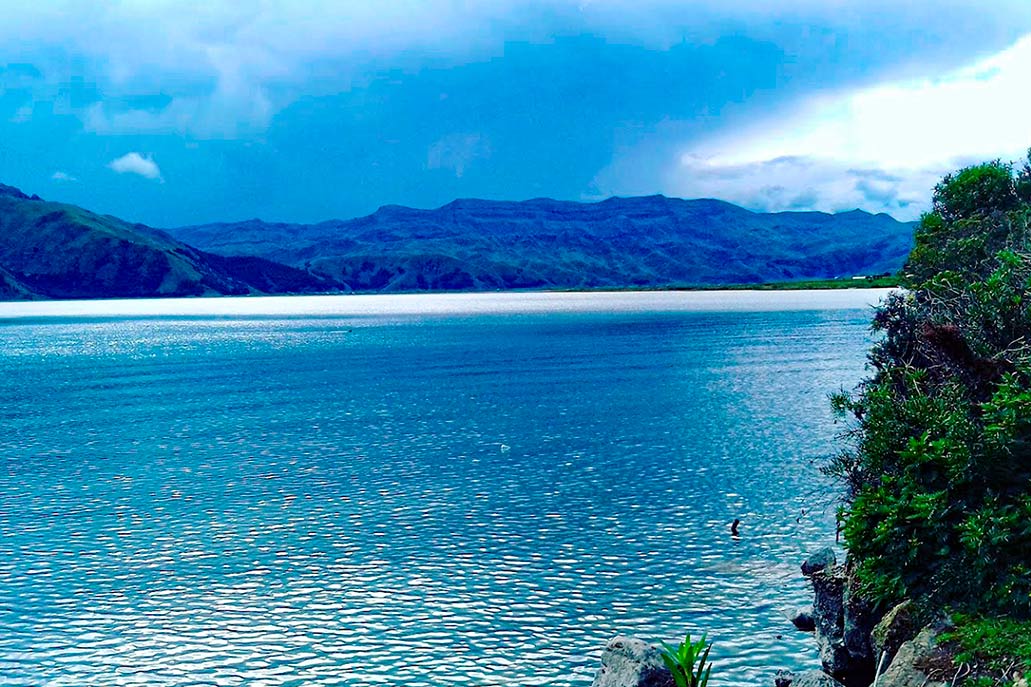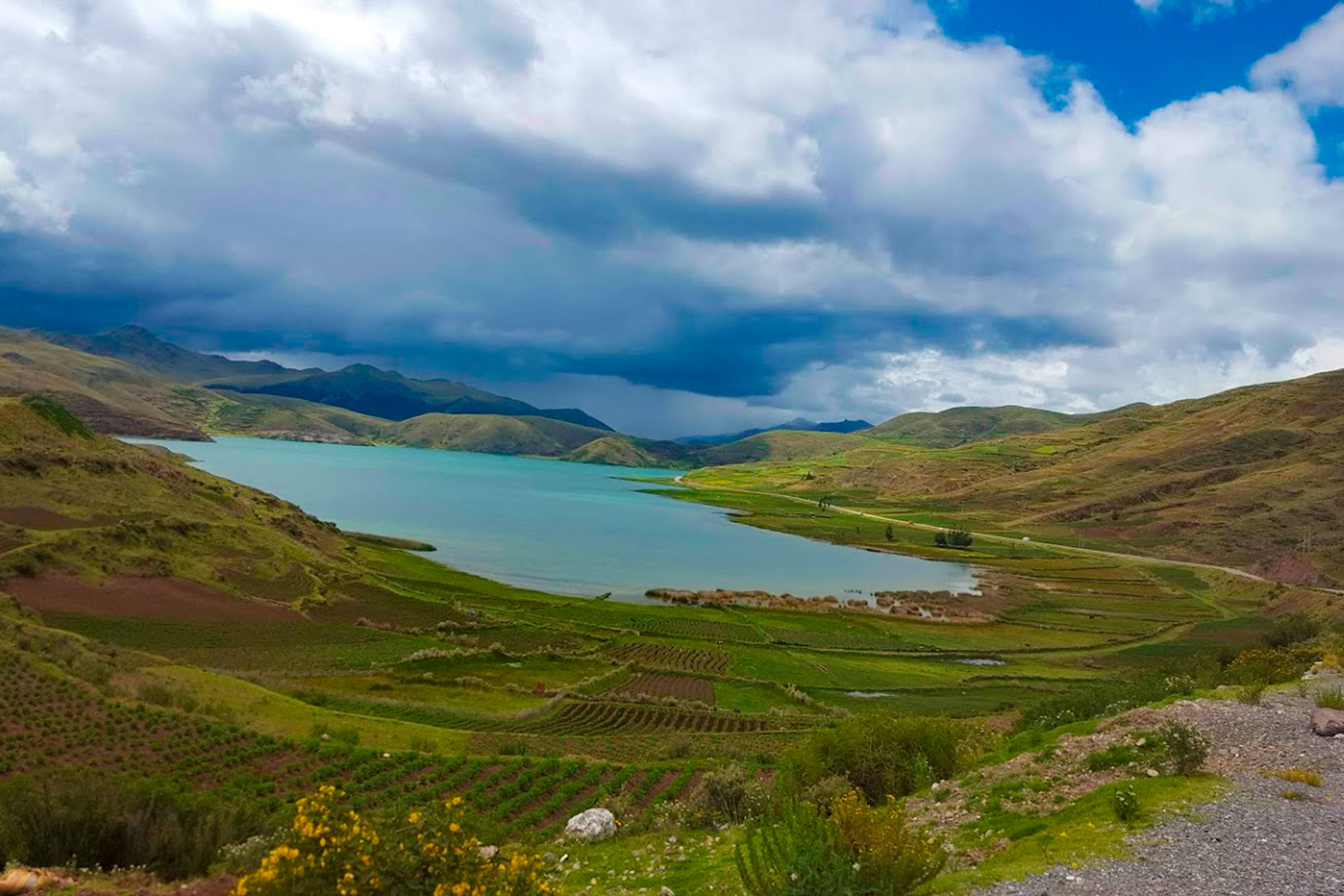The Túpac Amaru II Route south of Cusco and through 4 beautiful lagoons
The Tupac Amaru route allows you to learn more about the destinations we have south of Cusco. This tour, like most of those offered, begins in Cusco itself. The trip to take this tour is long, towards part of the history of Cusco and Peru. Regarding the history of this region, we will learn about one of the most important Inca constructions for expansion and dominance, we are talking about the Q’eswachaka bridge. But that will not be all, during the trip to this place you can visit the Túpac Amaru House Museum and the circuit of the 4 lagoons. Learn more about this tour and some of its variations.
Content
The historical context to learn more about this tour
After the Spanish conquest and the beginning of the viceroyalty in Peruvian territory, new problems began to appear. This time, the problems would begin due to excessive taxes and other political failures in the viceroyalty. A man of royal ancestry or the royal lineage of the Incas, precisely from the last Inca of the Inca resistance, Tupac Amaru. One of the first revolutionary movements would begin that sought, in a certain way, a new sovereignty and surely a new political order. This man would call himself Túpac Amaru II..
José Gabriel Condorcanqui (1738 – 1781) was in charge of leading this revolutionary feat. He motivated several chiefs of the time, especially from the Cusco region, to fight against the Spanish crown. This movement put the viceroyalty in trouble because the requests were to end taxes, such as the township, excise duties, and customs. There are also records that among his primary desires was to free the black slaves. For this purpose, he called himself the new Sapa Inca under the name of Tupac Amaru II. This would begin, a revolution that was seen for the first time in Latin America and the world, therefore, transcended future libertarian movements.
José Gabriel Condorcanqui achieved surprising victories on the battlefields. Unfortunately, as in other cases, he was betrayed by someone close to him, who not only betrayed him but also his commanders and his wife and children. The punishment imposed by the Spanish crown was brutal and without an ounce of mercy they began to martyr them. After arduous torture in Huacaypata Square, now the Plaza de Armas in Cusco, the entire family died from torture. These bloody murders were witnessed by the youngest son of the family and the entire population. Tupac Amaru II was dismembered and it is mentioned that parts of his body were sent to various districts and provinces that participated in the revolution. This is a reprimand and a warning.
The consequences were devastating, a large part of the indigenous chiefs lost these titles, in addition to their lands and other acquisitions. It was at this moment that some other Creoles began to divide up these lands, among many other injustices. Likewise, the reading of Los Comentarios Reales de los Incas was prohibited. Finally, things for the Andean population, chiefs, and indigenous people improved little or not at all. Stripping them of their lands and titles was the biggest blow it is presumed that the damage was greater and therefore the humiliation and new slavery processes began. This story concludes, positioning Tupac Amaru II as one of the precursors of the independence of Peru.
Q’eswachaka Bridge
Also considered the last Inca bridge. It is one of the best-kept relics in the Andes of Cusco. This is not only because it is something that is redone annually but because it is a sign of reciprocity for the common good. Let me explain, for this bridge to be built, the presence of 4 surrounding communities is needed. They all need the bridge to cross the Apurímac River without problems and safely. These four communities carry out different activities among which we will highlight for the moment the production of ropes based on ichu that are used for the construction of the bridge.
The most beautiful detail of this bridge is that it must be built from both sides. That is, it is required that the main knots be tied on both sides, and when weaving the other resistances, we also start from both sides. The four communities managed to maintain this tradition for more than 500 years, probably much earlier. As we mentioned, the main product of this bridge is ichu, a plant that can develop without problem at more than 3,700 meters above sea level where this bridge is located.
It also has great value because it shows one of the Qhapac routes Ñan. Surely in similar geographical territories, you could see more of this type of bridge where ichu is quite abundant. As we well know the Qhapac Ñan was vital for the expansion and communication of the entire Tawantinsuyo. This way of building bridges was not seen in other places and they surely had other ways of generating this construction. Since 2013 it has been considered Intangible Cultural Heritage by UNESCO. Hopefully, this legacy can be transmitted for many more years.
The route of Tupac Amaru II, a tour south of Cusco
This tour receives this name because during the tour, south of Cusco, we can find some places where battles were fought between the armies of Tupac Amaru II against the royal armies. Likewise, you can learn about the libertarian movement that began precisely among the communities that you can visit doing this tour. Also, you can see the places and homes where he spent the first years of his life.
All of these places that are now known as districts hold much more history than we can imagine. Furthermore, it is easy to assume the social importance that these places had due to the temples and churches that were built, right from the colonial era and the beginning of the viceroyalty. The districts visited are Tinta, Surimana, Tungasuca, Checacupe, and Pampamarca. We could name others, but these are the most important and also the ones that are most feasible to visit during this trip.
The travel time from Cusco to the Q’eswachaka bridge, making a direct trip is only 3 hours and 40 minutes. However, during the tour, there will be some stops, especially at the points indicated in the itinerary, and in others where we can learn about part of Tupac Amaru’s revolution. The one-day itinerary is easy to do and will only require having a good car or the tourism agency guaranteeing one. The activities that are normally carried out with an agency are very similar to what we will present as advice during this trip:
- Start the adventure early, remember that the distance from Cusco to Q’eswachaca is approximately 4 hours.
- Along the way you will find tourist places and restaurants where you can have breakfast.
- Continue the trip until you reach Chuquicahuana or Combata. From both places, you can take the detour towards the Circuit of the 4 lagoons.
- In the Circuit of the 4 lagoons you can see beautiful landscapes and 4 lagoons of different sizes.
- The lagoons vary in size and even in their characteristics.
- Since we arrive at Sangarará we can find a different landscape, where one feels like they can touch the sky.
- In Sangarará, it is possible to learn more about Tupac Amaru and his liberation campaign.
- Next, continue along the road until you reach the community of Quehue.
- From there, it is a short walk until you reach Q’eswachaca.
- When returning, it is recommended to enter the district of Tinta and Checacupe.
- Checacupe has one of the most beautiful temples, in addition to having a colonial bridge and the remains of an Inca and Republican bridge.
- Tinta is a district that previously had the political name of province. After the uprising of Tupac Amaru, this name was removed and it was considered a district belonging to the nascent province of Canchis.
- In Tinta it is possible to know two destinations that you hopefully visit. One of them is the Temple of San Bartolomé. It has decorations typical of the Andean Baroque and a large number of paintings.
- Another destination in Tinta is the Tupac Amaru II House Museum. It is in this place where all the motivations and the outcome of José Gabriel Condorcanqui’s revolution are meant.
- After this you can start the return. You can also make a free stop for lunch.
- Once you recharge your energy, you can make the return trip and rest along the way.
From the district where we are on the way to Sangarará, we can now reach the Pomacanchi lagoon. It extends very close to the road and you can see the entire beautiful landscape. Once we begin to descend towards Pampamarca. During this journey, you can see all the lagoons. In this sense, the tour allows you to visit the Pomacanchi, Acopía, Asnacocha, and Pampamarca lagoons. It is possible to appreciate all the lagoons that the sky often reflects, which creates incredible landscapes.
Other destinations south of Cusco
In case you think that you do not have enough time to visit the South of Cusco, you are right. This place not only houses the sites we mentioned above. Here you will find other destinations that will require more hours to visit. The first of them is Raqchi, an important Inca center that contains different buildings and presumably the largest temple ever built at that time. It is located 10 minutes from Tinta and if you have already decided to stay one more night you can visit it without any problem. Another way to visit it is by taking the well-known Tour, we are referring to the Ruta del Sol.
Another destination south of Cusco is Vinicunca and the districts surrounding this natural attraction. Among these districts, Checacupe and Pitumarca will stand out. Both places have beautiful temples. For its part, Vinicunca, or Montaña de Colores, is quite well known and the best way to visit it will be in an agency or if you are making a trip on your own, you will not have many difficulties. Even so, make sure to ask carefully about the detour to Vinincunca.
Recommendations
This is one of the easiest tours to do and to do it on your own you will only need to use Google Maps correctly. All the destinations described throughout this blog are accessible by road. Except for Vinicunca, where you have to follow a hiking route of at least 3 hours. Furthermore, the altitude of this place is more than 5000 meters above sea level.
Q’eswachaca is also located at 3700 meters above sea level. This could cause the famous altitude sickness. Therefore, you may have to acclimatize a day before by taking tours of the city of Cusco, in the museums, or some tours near Cusco. This tour could also help you, especially if you plan to do the 4-day Inca Trail. The Tupac Amaru Route can help you greatly because it does not require great effort and you will be able to see other places while you acclimatize.
If you suffer from altitude sickness, remember to stay calm and drink plenty of fluids. Preferably, you can rest the coca leaf in hot water and drink it. Its properties will help you have a considerable improvement naturally. It will also be necessary for you to communicate your discomfort with the guide or your travel companions, to act immediately if the discomfort persists.




